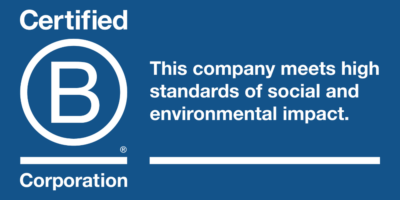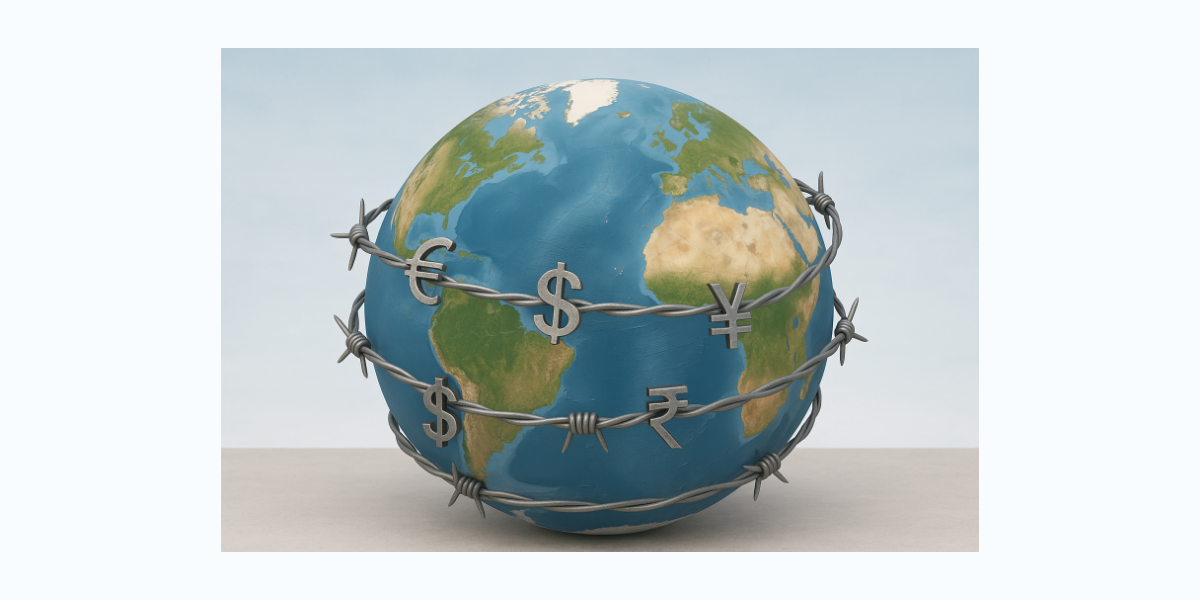The Art of the Tariff
(April 4, 2025). As we close the books on the first quarter of 2025, markets find themselves adjusting to a wave of policy-driven uncertainty—most notably, a broad and aggressive shift in U.S. tariff and trade policy. While economic data through March remained relatively stable, the early-April announcement of sweeping tariffs sparked renewed market volatility, inflation concerns, and questions about the strength and trajectory of global growth.
A New Chapter in Trade Policy
On April 2nd, the U.S. administration unveiled a package of tariffs that surprised markets in both scale and scope. A flat 10% tariff was applied to all U.S. imports effective April 5th. Just days later, targeted tariffs followed: an additional 34% on Chinese goods (bringing the total rate to 54%), 24% on Japan, 20% on the European Union, and 26% on India. These come on top of existing 25% tariffs on steel, aluminum, autos, and non-USMCA goods from Canada and Mexico. This is estimated to bring the effective tariff rate to between 20% and 25%, the highest in nearly a century (see chart below).
While previous tariff programs (e.g., under the first Trump administration) were narrower and often sector-specific, the current action is both broader and potentially longer lasting. That distinction matters because broader tariffs can amplify inflation, disrupt more supply chains, and reduce purchasing power across a wider array of industries and consumers.
Economic Implications: Slower Growth, Higher Prices
Current estimates suggest the new tariffs could shave 0.5% to 2.0% off U.S. GDP growth over the next 12 months, depending on duration and retaliation. Inflation is likely to increase in the short term, as companies either absorb higher input costs or pass them on to consumers. Business spending is expected to slow, and consumer behavior may become more cautious, particularly for big-ticket items.

Lessons from the Past: Not All Tariffs Work the Same
Prior tariff programs provide a useful lens for evaluating potential outcomes. For example:
- Washing machine tariffs in 2018 helped stimulate domestic production, but also raised consumer prices by 12% and led to price increases on un-tariffed appliances like dryers. The cost per job created was estimated at over $800,000 (Reuters).
- 2009’s tire tariffs saw Chinese imports drop, but were quickly replaced by other countries. Consumers paid almost more than $1 billion extra, while job preservation was limited.
- Television tariffs of 2017, in contrast, had minimal impact on prices due to ongoing technology-driven deflation.

Market Reactions: A Shift in Leadership
Financial markets had begun to adjust to these conditions even prior to the final announcement of “Liberation Day” tariffs. Equity volatility has increased, and leadership within the stock market has shifted quickly through the first few months of the year.
- Value stocks have outperformed growth by over 10% in the first quarter—a reversal of trends that defined the past several years.
- International equities have also outpaced U.S. markets by over 11%—the widest margin since 1989—helped by favorable currency trends and relatively lower exposure to U.S.-centric trade friction.
- Bond markets have rallied, with the Bloomberg U.S. Aggregate Bond Index up approximately 3% year-to-date as Treasury yields have declined.

Investment Strategy: Focused, Flexible, Long-Term
In this environment, we continue to emphasize discipline and adaptability across portfolios. Our positioning remains focused on quality over speculation, favoring companies with strong balance sheets, pricing power, and consistent cash flows—particularly those aligned with long-term secular trends. In addition to holding stocks, we maintain diversification across asset classes, with bonds, private assets, and selectively chosen alternatives playing a key role in managing volatility and inflation risk. Global equity exposure also remains important, especially in markets with stronger fiscal foundations and less direct exposure to U.S.-centric trade tensions. Within bonds, we continue to find value in high-quality corporate bonds and municipal securities, which offer attractive opportunities in a rate environment that is increasingly supportive, even as inflation risks persist.
Looking Ahead
The second quarter opened with more questions than answers—but also opportunities. While trade tensions may remain in focus for the months ahead, markets tend to adapt. Just as in past periods of volatility, we expect new market leaders to emerge and dislocations to create opportunity for long-term investors.
We remain committed to navigating this complex environment with thoughtful, research-driven strategies that align with your financial goals. If you have any questions or would like to review your financial plan and current allocation, we welcome the conversation.
Impact Example – Boston Trust Walden
To underscore our commitment to making the world a better place through responsible investing, we spotlight a positive impact achieved by one of our fund managers through their sustainable investments. With a track record dating back to 1975, Boston Trust Walden systematically incorporates responsible investment considerations into its investment decisions by evaluating how material factors affect a company’s financial profile. By embedding these insights into fundamental analysis, Boston Trust Walden seeks to uncover companies with stronger licenses to operate, lower risk profiles, and greater long-term growth potential.
Boston Trust Walden also conducts multiyear, multiphase engagements with companies, complimenting their long-term investment approach. Throughout the past year, they focused their engagements on climate risk, equality, and governance. As a result, Boston Trust Walden successfully completed two shareholder proposals relating to climate risk in 2024. The first was at Chemed Corporation, a healthcare services company, seeking an inaugural sustainability report aligned with SASB Standards for its industry that analyzes material risks, opportunities and related risk mitigation strategies. The second was at Comfort Systems, a HVAC and plumbing services provider, seeking greenhouse gas emissions reduction targets alongside a transition plan for achieving those targets.
As always, our team appreciates your trust and confidence.











